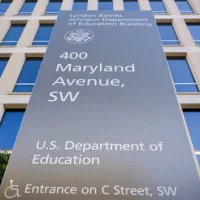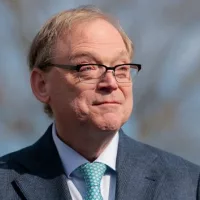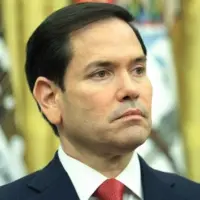
(WASHINGTON) — A Washington, D.C., jury began deliberations Tuesday in the seditious conspiracy case against Oath Keepers leader Stewart Rhodes and four other associates in connection with the Jan. 6, 2021, attack on the U.S. Capitol.
Rhodes and his alleged co-conspirators are charged with disrupting the peaceful transfer of power by conspiring to oppose by force the certification of Joe Biden’s Electoral College victory, among multiple other felonies.
Rhodes himself did not enter the U.S. Capitol that day and maintains that his group only intended to provide security and medical aid to those attending multiple pro-Trump demonstrations around the city.
Prosecutors have spent months putting on their case, documenting what they said were the conversations, messages and actions of the defendants leading up to their involvement with the events of Jan. 6, and alleged efforts to cover up their criminal activity afterward.
Rhodes, a Yale Law School graduate who founded the Oath Keepers militia in 2009, sent increasingly frantic messages to members of the group, following the 2020 election, about their need to be prepared to prevent Biden from taking office, the government said.
“We aren’t getting through this without a civil war,” Rhodes said in a Nov. 5 message shown by prosecutors.
Rhodes took the rare step of testifying on his own behalf during the trial, and told the court he continues to believe that the 2020 election was illegitimate, citing an unfounded theory that pandemic safety measures unconstitutionally affected voting.
Relying on testimony from the FBI, prosecutors allege that Rhodes worked between the election and Jan. 6 to rally his troops — many of them former law enforcement and military service members — and spent thousands of dollars on weapons and equipment as he traveled across the country toward Washington.
“It will be a bloody and desperate fight,” Rhodes wrote in a Dec. 11 message to other Oath Keepers, prosecutors said. “We are going to have a fight. That can’t be avoided.”
The charges: seditious conspiracy, obstructing government, aiding and abetting
Over dozens of hours in the D.C. federal courthouse, prosecutors have worked to reach the high bar of proving to the jury that the five defendants, Rhodes, Thomas Caldwell, Jessica Watkins, Kenneth Harrelson and Kelly Meggs, all engaged in a conspiracy to forcibly oppose the execution of laws governing the transfer of presidential power.
The government attempted to preempt innocent explanations for the defendant’s actions with evidence they said shows Rhodes and his associates would continue plans to disrupt government operations following Jan. 6.
“We aren’t quitting,” alleged co-conspirator Meggs wrote the night of Jan. 6 in a message presented by the government. “We’re reloading.”
Rhodes continued posting about a violent revolution and spent thousands on firearms and related equipment in the days after Jan. 6, records presented by the government showed.
If convicted on the seditious conspiracy charge, they could face a maximum of 20 years in prison, though all five members face a range of other felonies that could carry hefty prison sentences as well.
Alleged Oath Keeper co-conspirator Jessica Watkins said in testimony last week she accepted responsibility and regretted some of her actions inside the Capitol on Jan. 6, despite claiming credit for storming the building and calling it a “patriot movement” on social media after the fact.
After making her way through the crowd at the grand double doors on the Capitol building’s eastern side — which she described as similar to being at a Black Friday sale — Watkins found herself in the middle of a mob, crammed into a hallway leading further into the Capitol building. Metropolitan Police Department officer Christopher Owens, who testified earlier in the trial, was at the other end of the hallway with fellow officers physically keeping the mob from advancing.
Watkins admitted to yelling “push!” and testified that she now regrets it and didn’t realize what was happening at the front of the group.
“I take full responsibility for what happened in this hallway,” Watkins said. “I know it opens me up to criminal liability. I’m going to get charged for it — I get it.”
The officers ultimately held the line, but Watkins and others remained inside the Capitol building before she left to help carry out someone who had been hit in the face with pepper spray.
Watkins described being “excited” upon entering the capitol. Even after the incident in the hallway, she can be seen on Capitol security camera footage smoking some sort of pen-sized item. She later told the FBI that she had smoked marijuana inside the building.
“It felt like a historic moment,” Watkins said. “We were making history and I wasn’t absorbing the fact that we are not only trespassing but we’re trespassing in one of the most secure buildings in the world.”
But prosecutors circled back to the political nature of Watkins’ views, especially as they concerned the 2020 election, suggesting Biden’s victory may have been threatening to her and her alleged co-conspirators.
“The election itself wasn’t a threat,” Watkins said, adding that she was more concerned about what might happen “after the inauguration.”
Watkins said she maintained a “steady diet of InfoWars and Alex Jones” in the months before Jan. 6, watching the conspiracy theorist’s rants and interviews several hours a day, which she testified informed her world view and concerns about the government.
Watkins became concerned about a variety of conspiracy theories promoted in far-right circles around the time of the 2020 election. She testified that she became worried about the United Nations deploying to Washington, D.C., to ensure Joe Biden took office, then forcibly taking guns from Americans, mandating COVID-19 vaccinations and allowing a possible Chinese invasion from Canada.
“In hindsight I feel like I was gullible,” Watkins told the court.
Defendants contend they were there to provide security
Defense attorneys have sought to dispute the government’s arguments that the group ever engaged in plans to disrupt the Electoral college certification — arguing prosecutors are selectively quoting their messages and conversations to cast their intentions as seditious in nature.
They have also vigorously disputed the government’s narrative about the so-called “Quick Reaction Force” of heavily armed Oath Keepers members stationed at a hotel just outside the city on Jan. 6, which prosecutors have argued were in place as part of the plan to potentially use force to prevent Donald Trump’s removal from office.
Defense attorneys note that at no point has the government alleged that any of the firearms at the hotel were brought into D.C. on Jan. 6 or afterward, and that Rhodes never called them to come to the Capitol in the midst of the riot. In his own testimony, Rhodes denied having any knowledge about the specifics of the so-called Virginia QRF, even though he did acknowledge recommending members who decided to bring their firearms to keep them out of Washington.
Rhodes, in particular, has leaned heavily into his defense that he was never calling for anything unlawful in his public and private pleadings to have Trump mobilize the militia by invoking the Insurrection Act.
Attorneys for the defendants attempted to break the line prosecutors drew between the election and the Capitol siege, regardless of their clients’ far-right political views.
“Yes, things were said,” Stewart Rhodes’ attorney, James Bright, said. “It was heated rhetoric. Horribly heated rhetoric. Bombast. Inappropriate.”
But Bright contended none of this talk amounted to any sort of Jan. 6 plan to stop official government proceedings.
Kelly Meggs attorney, Stanley Woodward, similarly sought to undermine the idea that a coordinated effort took place between the defendants on Jan. 6 while arguing that any coordination that was done involved providing security to VIPs who were speaking at events that day.
“We don’t take lightly the events of Jan. 6, but we do take issue with the government’s characterization of what happened that day,” Woodward said.
Both Bright and Woodward condemned the violence and destruction that happened in and around the Capitol on Jan. 6, while maintaining it was not at the fault of their clients.
Woodward showed security camera footage from inside the Capitol of Meggs and other Oath Keepers entering double doors on the eastern side of the building after they had been forced open by rioters. Video from outside shows the Oath Keepers advancing through the crowd, but not making it all the way to the front before entering the building.
During his closing arguments, Harrelson defense attorney Brad Geyer focused on the government’s video evidence where rioters on the Capitol’s eastern steps were singing the national anthem while officers were being attacked with chemical spray and the defendants were further behind, walking up the steps through the massive crowd.
“If the video doesn’t fit you must acquit,” Geyer said repeatedly during closing arguments, channeling a famous refrain from the O.J.Simpson murder trial.
Geyer drew the jury’s attention to part of the crowd that was in front of the Oath Keepers and the rioters who broke open the doors before Harrelson and the others made it up to that level. Upon entering, Harrelson spent about 20 minutes in the building before leaving.
“They want you to turn this man’s life upside down for 17 minutes,” Geyer said. “The absurdity boggles the mind.”
What is seditious conspiracy?
Prosecutors provided a specific roadmap for the jury to reach its judgments, breaking down the meaning of seditious conspiracy in plain terms: an agreement to oppose the government by force. There does not need to be a specific start or end date and all the defendants did not need to join the conspiracy at the same time, Assistant U.S. Attorney Kathryn Rakoczy said last week.
The rarely-used seditious conspiracy statute was signed into law following the Civil War with the aim of prosecuting Southerners who might still have wanted to fight against the government.
The Justice Department hasn’t brought seditious conspiracy charges since 2010, when prosecutors indicted several Michigan residents and members of the Hutaree militia with conspiring to oppose by force the authority of the U.S. government. But the defendants were all acquitted after a judge determined that prosecutors had hinged too much of their case on statements that were First Amendment protected speech.
The last successful seditious conspiracy conviction was in 1995, when a jury found an Egyptian cleric and his followers guilty in a plot to bomb the United Nations, the Lincoln and Holland Tunnels and a building housing an FBI office.
The Oath Keepers now on trial are not charged with seeking to overthrow the U.S. government — instead prosecutors argue their conduct falls within the portion of the seditious conspiracy statute related to conspiring to oppose the government’s authority and forcibly blocking the execution of laws.
Copyright © 2022, ABC Audio. All rights reserved.















